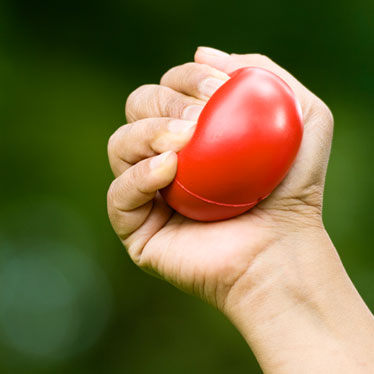Strength Exercises For Violists And Violinists

When people think of extracurricular activities that require strength, musicianship isn't typically at the top of the list. Yet, others take for granted what musicians realize from their very first practice - playing the viola and violin does, indeed, require a similar emphasis on strength, flexibility, and dexterity as athletics.
If violists and violinists aren't careful about building and maintaining their strength, they're subject to chronic discomfort and injury. According to published scientific research:
The physical demands of performance in the music profession are such that musicians have been compared with athletes...epidemiological data show that some kind of performance-related pain or injury will affect between 32% and 89% of undergraduate music majors at a university.
Focusing on Strength-Building Exercises Reduces Injury Risk
Researchers who study discomfort, pain and injury related to playing the viola and violin have also noted:
...that the physical condition of many music students may be inadequate to cope with the demands of playing their instruments over these extended time periods. Physical exercise has been widely advocated for undergraduate music majors at a university to assist in the athletic task of playing an instrument for many hours a day.
By focusing on the muscles, and areas of the body required for healthy musicianship, you'll build endurance and minimize your chances of developing an overuse injury. An added benefit is that the same exercises that improve playing posture and performance endurance also benefit the body as a whole.
Build strength in the fingers, wrists and forearms
Playing both violin and viola requires a tremendous amount of precise finger work and the support of the wrists and forearms for both holding the instrument neck as well as for bowing. The muscles, nerves, and connective tissue (ligaments and tendons) are all at risk for injury if you don't take time to warm up properly before you practice and give yourself ample breaks to shake out your hands, wrists, elbows/forearms, etc.
Before picking up the instrument, take time to gently bend your wrists back and forth and side to side, repeating five to 10 times per wrist. Rotate the wrists around clockwise, and then counter clockwise. Gently massage each hand, running up and down the fingers. Hand therapy balls for grip and strength can also help in between practice sessions. These small, but significant, exercises warm up these areas and increase circulation, giving them extra oxygen for the tasks ahead.
Read, 10 Tips for Better Finger Dexterity, for further information about exercises, warm-ups and tips for strengthening the fingers, hands, wrists and arms.
Develop strong core muscles
Many repetitive motion and overuse injuries ultimately stem from poor playing posture - particularly injuries affecting the shoulders, neck and jaw.
It's important to note that in addition to exercises that strengthen and build endurance in these areas, string musicians must use instruments that are sized correctly - and that includes the chin rest and/or shoulder rest. Any discrepancies between the player's size and his/her instrument will have negative effects on the body over time, regardless of how "in shape" s/he is.
Two of the best exercises for strengthening the core are yoga and pilates. And added bonuses of both is that, in addition to gentle strength training and overall flexibility, these two exercise forms work on interior core muscles that are often overlooked in more traditional forms of exercising (like running, hiking, biking, etc.). This core strength will help your body from head/neck to toe.
Read, 6 Best Yoga Positions for Violinists (which also translates to violists), as well as Pilates for Cellists, to learn about how each type translates back to healthy playing and postural habits.
Incorporate light weight training into the mix
Overexercising is not the key here. In fact, the aforementioned study noted that endurance and task-related strength-training exercises were more beneficial to string musicians than strength-only training. A gentle weight routine, using lighter weights and more repetitions will enhance muscle tone and strength without additional strain or risk of injury.
Your local gym or campus weight room will have staff who can help you learn a few basic exercises that will help the muscle groups used when playing the violin or viola.
Don't forget strength of mind
The health of your physical body is certainly important, but so is the health of your mind. Musicians experience a tremendous amount of pressure - both internally and externally - to always be their very best. Then there is the stress associated with balancing a busy academic and/or work schedule with rehearsal and performance schedules. Throw pre-concert jitters into the mix, and its easy to see how many musicians feel they're hanging on to their sanity by a thread.
Thus, strengthening exercises for the mind are essential for remaining calm and keeping things in perspective. There are many roads to achieving a more peaceful, mindful state - so take the time to explore and find the right one for you. Breath work, yoga, Tai Chi, online meditation apps and/or visualizations, can all benefit you by providing an anchor for keeping your mind clear and focused on the present moment and the immediate tasks at hands.
Think of these strengthening exercises as an extended part of your practice time and the investment will be worth it by way of a more comfortable body, reduced risk of injury and a peaceful mindset.
Sponsored by Thomastik-Infeld


